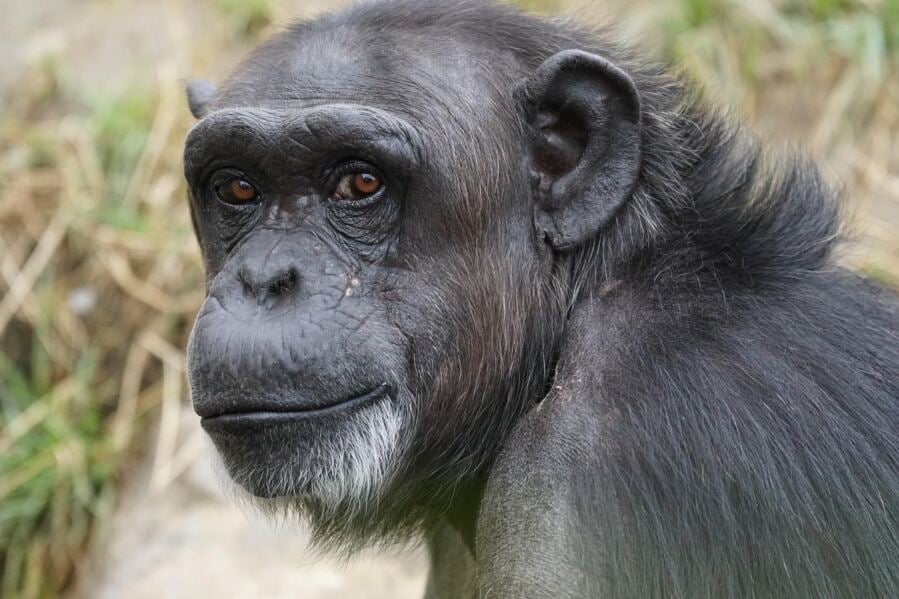Scientists have discovered that humans mend injuries at a dramatically slower pace than other primates, challenging long-held assumptions about wound healing across species.
A team of international researchers found that while baboons, chimpanzees, and monkeys heal at surprisingly similar rates, humans lag significantly behind – taking nearly three times longer to repair comparable injuries.
“This finding indicates that the slow wound healing observed in humans is not a common characteristic among primate order and highlights the possibility of evolutionary adaptations in humans,” the research team noted in their recently published study in the Proceedings of the Royal Society B.
The groundbreaking research, led by scientists from Japan, Kenya and France, measured wound healing in multiple species under both laboratory and natural conditions. Their investigation included baboons, Sykes’ monkeys, vervet monkeys, chimpanzees, rats, mice, and humans.
Intriguingly, non-human primates and rodents showed nearly identical healing rates, averaging around 0.613 millimeters per day. Humans, however, healed at just 0.25 millimeters daily – a rate that remained consistent regardless of age, sex, or wound location.
For Dr. Akiko Matsumoto-Oda, one of the study’s lead researchers, this stark difference raises fascinating evolutionary questions. The team observed that despite significant differences in appearance and size between species – from tiny mice to massive chimpanzees – their wounds closed at remarkably similar rates.
The researchers first verified that wound healing in captive animals matches healing in the wild, addressing a common concern about laboratory studies. They then demonstrated that non-human primates heal at rates comparable to rodents, suggesting a possible “optimal” healing rate shared across many mammal species.
This unexpected consistency across such diverse animals makes the human exception all the more puzzling. What evolutionary forces might have driven humans to develop such comparatively sluggish healing?
The answer may lie in our unique physical adaptations. Humans have significantly fewer body hairs but far more sweat glands than our primate relatives – adaptations that helped our ancestors regulate temperature during long-distance hunting and gathering in hot environments.
To compensate for reduced hair protection, human skin evolved to be three to four times thicker than that of other primates. This thicker skin provides improved protection but comes with an apparent trade-off – dramatically slower healing.
Another intriguing possibility involves our social evolution. The researchers suggest that the development of social support networks and early medicinal knowledge may have reduced selection pressure for rapid healing.
Evidence from ancient human remains shows individuals with serious injuries or disabilities who survived for years, indicating community care. Archaeological findings have even revealed traces of antibacterial plants and pain-relieving compounds in Neanderthal dental plaque.
“A more comprehensive understanding of the underlying causes of delayed wound healing in humans requires a comprehensive approach that integrates genetic, cellular, morphological, fossil human skeletal and extant non-human primate data,” the researchers concluded.
The findings open promising avenues for medical research. By understanding how other mammals heal so effectively, scientists might develop new approaches to accelerate human wound recovery, particularly for chronic wounds that affect millions of patients worldwide.
The study included 24 human patients with surgical wounds, 17 non-human primates, and 12 rodents. The research team carefully measured healing distances over time, using consistent methodology across all species to ensure comparable results.
For anyone who has ever complained about a slow-healing cut or scrape, there’s now scientific confirmation – humans really do heal remarkably slowly compared to our mammalian relatives. The next time you’re nursing an injury, consider that your chimpanzee cousin would likely be fully recovered in just a third of the time.
If our reporting has informed or inspired you, please consider making a donation. Every contribution, no matter the size, empowers us to continue delivering accurate, engaging, and trustworthy science and medical news. Independent journalism requires time, effort, and resources—your support ensures we can keep uncovering the stories that matter most to you.
Join us in making knowledge accessible and impactful. Thank you for standing with us!

